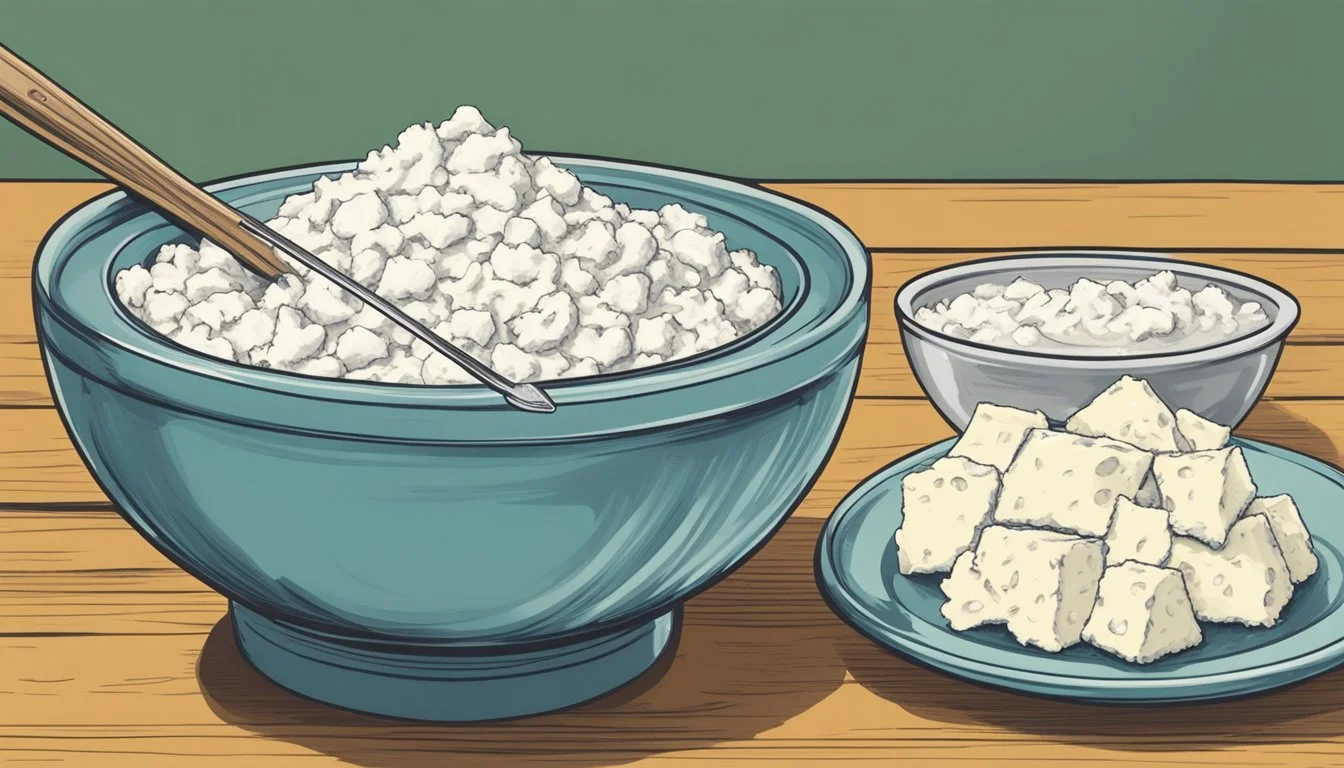How to Substitute Ricotta for Cottage Cheese
An Easy Guide for Home Cooks
Substituting ricotta for cottage cheese (how long does cottage cheese last?) in recipes is a common practice for many cooks and chefs. Ricotta cheese is a smooth Italian whey cheese with a delicate flavor that pairs well with a variety of dishes, from pastas to desserts. Its creamy texture makes it a suitable alternative to cottage cheese, which is lumpier and has a slightly different taste profile. When selecting ricotta to replace cottage cheese, it's important to consider the desired consistency and flavor outcome of the dish being prepared.
Cottage cheese has a higher moisture content compared to ricotta, which can affect the texture of certain recipes if used as a direct substitution. To achieve a consistency similar to that of cottage cheese, full-fat ricotta is often recommended, as it contains more moisture than its low-fat counterpart. The dish's seasoning may also need to be adjusted to account for the milder taste of ricotta. Chefs should taste and adjust the seasoning as necessary to ensure the end result is satisfying.
In savory dishes such as lasagna or stuffed shells, ricotta can seamlessly replace cottage cheese by matching the required amount called for in the original recipe. For desserts or spreads that typically use cottage cheese, blending ricotta to a smooth consistency can help achieve a similar texture. Proper substitution enhances the dish while keeping true to its original essence.
Understanding Cottage Cheese and Ricotta
When substituting ricotta for cottage cheese, it's crucial to consider their distinct characteristics, including texture, flavor profile, and how they interact with other ingredients in recipes.
Cottage Cheese Basics
Cottage cheese is a fresh cheese known for its mild flavor and chunky texture. It is produced from milk solids formed when acid is added to milk, causing it to curdle. Cottage cheese can come in different fat levels, from non-fat to full-fat versions.
Ricotta Cheese Features
Ricotta is a traditionally Italian cheese made mostly from the whey left over from the cheesemaking process. It has a creamy consistency and a slightly sweet flavor. Ricotta can be made from various types of milk, including cow, goat, sheep, or buffalo.
Comparing Textures and Flavors
Texture: Ricotta is smoother and finer, while cottage cheese is lumpier with distinct curds.
Flavor: Ricotta typically has a sweeter and subtler taste compared to the more pronounced and savory taste of cottage cheese.
Nutritional Considerations
Protein: Both cheeses are good sources of protein, however, cottage cheese generally has a higher protein content.
Fat Content: Ricotta's fat content varies depending on the milk used; it can be higher than in cottage cheese, especially in its full-fat form.
Calcium: Ricotta and cottage cheese both contribute a significant amount of calcium to one's diet.
Culinary Uses of Cottage Cheese and Ricotta
Ricotta and cottage cheese are versatile in the kitchen, suitable for both sweet and savory recipes.
Baking: Ricotta is a staple in Italian baking, notably in lasagnas and pasta dishes (What wine goes well with pasta dishes?).
Desserts: Both cheeses are often used in desserts, but ricotta is preferred for a smoother texture.
Savory Recipes: Cottage cheese, with its lower fat content and higher protein, can be a healthier choice for savory recipes.
Substituting Ricotta for Cottage Cheese
Substituting ricotta for cottage cheese in various recipes can be an excellent way to tweak texture and taste according to preference or dietary needs.
Reasons for Substitution
People may choose to substitute ricotta with cottage cheese for a lower fat content, a milder taste, or to adjust the moisture content in recipes. Cottage cheese typically has fewer calories and a lighter texture, making it suitable for those watching their diet.
Concepts of Substitution
When substituting ricotta for cottage cheese, consider the fat content, moisture level, and consistency. Ricotta is smoother and creamier, while cottage cheese has larger curds and more liquid, which may affect the final outcome of a recipe.
Practical Substitution Guidelines
Equal Ratios: Replace ricotta with cottage cheese in a 1:1 ratio.
Draining: Strain cottage cheese to reduce moisture for a consistency closer to ricotta.
Blending: For a smoother texture, blend cottage cheese until it matches the creaminess of ricotta.
Recipe-Specific Substitution Guidance
Pasta Dishes: Substitute directly, matching the ricotta's required amount.
Cheesecake: Blend cottage cheese to achieve the required smoothness.
Pancakes & Breads: Maintain moisture content by adjusting the amount of liquid ingredients.
Adjustments for Baking
For baked recipes like cheesecake or quick bread, reduce the moisture in cottage cheese by straining it thoroughly. Achieve a richer flavor by adding a small amount of cream to the strained cottage cheese.
Non-dairy and Vegan Alternatives
Explore vegan options like tofu, blended into a creamy texture with a touch of soy or almond milk to mimic ricotta's consistency and creaminess. Other lactose-free substitutes include dairy-free cream cheese and Greek yogurt alternatives.


